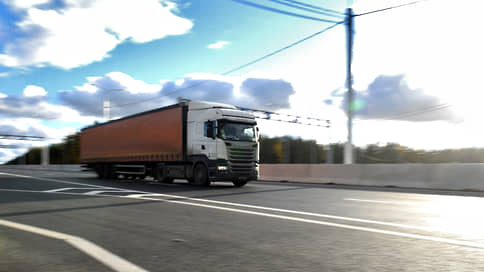Tariffs for cargo transportation continue to grow

Participants in the market of car cargo transportation celebrate the beginning of the growth of tariffs for their services since April – May. Prices became close to the level of 2024, although so far they have not reached it. But most companies associate this not with an increase in demand, but with a reduction in an affordable car fleet. Some carriers are waiting for further price restoration, but most of the players foresee the trend reversal at the slightest change in the key rate. At the same time, the industries indicate the problem of dumping by Chinese carriers in the Russian Federation, where the operating conditions are more favorable for them than for domestic companies.
Tariffs for automobile cargo transportation in May reached the minimum separation from last year (difference – 3.3%), which indicates their sustainable restoration, experts of the “Monopoly” logistics platform in their digest. In this May, the tariff amounted to 66.4 rubles. per kilometer, in May 2024 – 68.7 rubles. per kilometer.
However, the reasons for the recovery are not so rosy: there are fewer cars in the market. “It is most noticeable to increase tariffs by the reduction in the number of available transport,” says Lev Starikovsky, the director of the development of Monopolis, “some of the companies, due to a decrease in working capital, abandoned the technique acquired in leasing in 2023–2024, when the margin of cargo transportation reached the peak.” Some carriers, he adds, deliberately reduced activity in anticipation of more profitable tariffs. “The cargo flow itself increases only in some directions and under the influence of the seasonal factor,” says Mr. Starikovsky.
“The number of goods is not growing, it is for sure,” agrees the president of the KBT customs broker Julia Schlenskaya. According to her, for a long time, not so much the number of cars has been reduced as the number of drivers. “Young people have not been going on to truckers for a long time, despite the high level of their income at the moment,” she says. “The elderly retire for natural reasons, as well as in connection with their participation in their own: truckers usually have particularly valuable military accounting specialties, such as a driver-driver. The machines themselves also became significantly smaller. Due to the lack of goods in the goods market, transport companies massively return vehicles previously taken. ”
Market participants in different ways assess the contribution to this increase in the prices of the seasonal factor. The commercial director of Dentro Albina Dronova confirms that since mid -April, the shipping market has begun to rise in tariffs and in demand for transport. “You can associate this with a seasonal need – the segment of building materials and“ summer ”goods (drinks, consumer goods) have been activated,” she says. “But, of course, for the most part, the reason is a reduction in roads on the roads.” According to Mrs. Dronova, in the current situation there are few “daredevils”, who acquires equipment, as last year. “Now we only get signals as the transportation colleagues are more likely to go towards optimization, and some are suspended due to the impossibility of conducting business activities in the conditions of six-month losses,” she says. As Albina Dronova notes, it is early to make forecasts and the tariffs are still far from 2024, but the company counts on maintaining a trend for growing bets.
But, according to the director of the procurement of transport services FM Logistic in Russia, Eduard Mironov, there is no need to talk about a sharp increase in prices due to the general departure of transport owners from the market. “Of course, we see an increase in tariffs in some areas, and even now there are directions with a rate of 90-100 rubles. For a kilometer without VAT for a standard refrigerator, ”he says.“ But such an increase in prices and rates are more often associated with a seasonal factor. ”
The founder of Vig Trans Igor Rebelsky expects that with the departure from the market, part of the carriers and reduction in the park at the remaining prices will continue to play the fall. “But any forecast can change the Central Bank by raising or lowering the rate,” he notes. “At the beginning of the year, there were an interview with transport companies that shared forecasts for this year, and many did not come true.” Nobody knows for sure how prices will lead in the coming months, Mr. Rebelsky continues, but “One thing can be said for sure: as soon as the Central Bank’s rate returns to reasonable limits, turnover will begin to grow and we will see an abrupt growth in transportation tariffs.”
Julia Shlenskaya adds that the situation in the industry will depend on whether the expansion of Chinese car carriers in the Russian market will continue, or the government will take measures. She warns of possible dumping from the Carriers from the PRC, which can afford this at a key rate of 3% against Russian 20%. “And when Russian carriers, unable to withstand competition, will leave the market, the prices will be dictated by those who will remain,” Mrs. Schlenskaya is sure. Recently, the aggravated competition with Chinese carriers, who formally do not have the right to work in the Russian Federation in Cabotage, but work, is actively discussed at conferences. The working conditions of Chinese carriers are more profitable, which allows them to offer a price 30–40% lower than the market of the Russian Federation. In particular, according to Trasko, the Chinese carrier pays 4 million rubles for a tractor. against Russian 7.5 million rubles, leasing 4-6%, not 25–29%, salary to drivers 170-200 thousand rubles. Against 230–260 rubles, while working in conditions of milder regulations.







